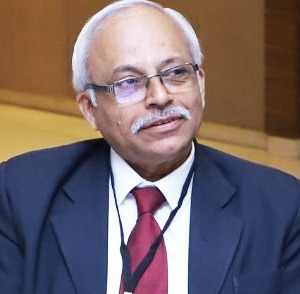
COLUMN/ THE WRITE LINE Dr. Amitav Banerjee
Dr. Amitav Banerjee
Our priorities seem to be off track. This was driven home by the gruesome train tragedy in Odisha on June 2, killing almost 300 people and injuring thousands. The Indian Railways is undergoing a much-hyped $30 billion modernisation with gleaming new trains and glittery new stations.
A new semi-high-speed train touted as “made in India” and called “Vande Bharat Express” is showcased as a sign of our fast progress, with our country’s leader flagging off many of these trains on their inaugural journeys around the country. But the Odisha train accident has come as a rude jolt. It brought into sharp focus that neglect of safety in public services comes at a huge price by way of human lives.
Finding scapegoats after such accidents does not address the real problem. No human comes to work with an intention to cause an accident. A retired general manager of the Indian Railways has stated that adding trains, increasing train speed, and stressing punctuality have severely overstretched the railways’ systemic capacity and compromising safety. Better safety will require a pause in this strategy to allow the system to recoup. There are limited resources to run existing trains. So, adding more trains only strains the system. And at stake are human lives.
The Bahanaga train tragedy in Balasore has brought into focus that the task for the railway ministry is to have realistic goals and cut back on trains on overstretched routes. Focusing solely on technology is not sufficient. Integrity and courage of railway officials working at the ground level are required to resist blindly following orders of their superiors. If there is political will to bring about this paradigm shift, then train safety will improve dramatically. Anything short of this will jeopardise human lives.
Parallels can be drawn to the predicament the Indian Railways finds itself in today to the state of public health in the country. Our policy makers seem to be dazzled by the glitz and glamour of global market forces promising instant solutions to our long-standing public health problems. Global currents and “keeping up with the Joneses phenomenon” often result in throwing caution to the winds. And what’s at stake? Again, it’s human lives.
Often, interventions, done with good intentions by global philanthropists, add to the problems instead of mitigating them. A case in point is the addition of newer vaccines to our national immunisation programme without having first developed a robust public health infrastructure.
It is like running new trains on old and inadequate rickety tracks. Vaccines are administered to millions of healthy people, mostly children and young adults. Therefore, adverse effects or deaths, howsoever rare, raise issues of safety, ethics, and public confidence.
One cannot tell a parent of a dead child, even if it is the rarest of rare deaths, that the “benefit of the vaccine outweighs the harm” – a deceptive phrase parroted around by insensitive public spokespersons. Due to our poor health infrastructure, there is potential of many “rarest of rare” deaths and adverse effects going undetected.
Without a sound capture system of adverse events following immunisation (AEFI) in our country, most deaths are waived off as “coincidental” and any patterns of unusual events or deaths that can act as a red signal are overlooked. Imagine running fast trains on old rickety tracks with the signalling system malfunctioning at the same time! That is exactly what we are doing in our rush to add an ever increasing number of vaccines to our national programme.
In a vast country with newer vaccines being administered to millions of people, scattered patterns of unusual events will be missed without a signalling system. That’s unlike the case with tragic train accidents, when a large number of deaths cannot be brushed off as coincidental.
Our public health policy makers have become so accustomed to launching newer interventions on old tracks without proper signals that they fail to heed those raised by vigilant data scientists. A case in point is the rise in sudden deaths among young people all over the world after the launch of a new intervention.
A group of researchers estimated gross under-reporting to the tune of only 1% of all of the AEFI being reported, after the launch of fast-track vaccines at warp speed – as if pushing passengers, some of them unwilling, on a fast train to nowhere running on old tracks with malfunctioning signals. One shudders at the silent tragedies as a result of well-meaning but short-sighted interventions.
In resource-poor settings, either because of lack of resources or the will – the latter seems more likely – it becomes very difficult for confirming adverse events. This absence of evidence due to sloppy monitoring is parroted as evidence of absence of AEFI by our uncritical public spokespersons.
There are hundreds of infectious diseases. Developing vaccines for them has become a profitable business. If this trend continues, we will have hundreds of vaccines in the future – just like trains to nowhere running on rickety old tracks with malfunctioning signals.
Only focusing on vaccines for disease prevention at the cost of larger public health issues can act as a red herring for both opulent and economically targeted countries, as the Flint water crisis proves. The public water supply of Flint in Michigan, US, was contaminated with lead, microorganisms, and toxins, exposing over 100,000 Americans including, pregnant women, nursing women, and children to harmful substances.
The core issues to be deliberated when introducing a new vaccine are public health priority of the target disease, dictated by incidence, lethality, and whether there is effective treatment or other prevention measures.
It follows therefore, that a proper health system with non-intrusive disease surveillance and monitoring should be in place to collect these inputs essential for decision-making before launching a new vaccine. And of course, a robust AEFI monitoring system should be well in place before launching the intervention.
Crucially, all these are difficult to achieve without a healthy public health infrastructure that’s free from corporate influences.
(Dr. Amitav Banerjee was a field epidemiologist for over two decades in the Indian Army. He led the mobile epidemic investigation team at the Armed Forces Medical College in Pune, India, from 2000-2004. During this period, he investigated a number of outbreaks in the country. He is presently a professor at a medical college in Pune and an academic editor at PLOS ONE journal.)
The column reflects the author’s opinions and not necessarily those of Empire Diaries.
REPUBLISHING TERMS:
All rights to this content are reserved. If you want to republish this content in any form, in part or in full, please contact us at writetoempirediaries@gmail.com.













Pretty! This has been a really wonderful post. Many thanks for providing these details.
Beautifully narrated.